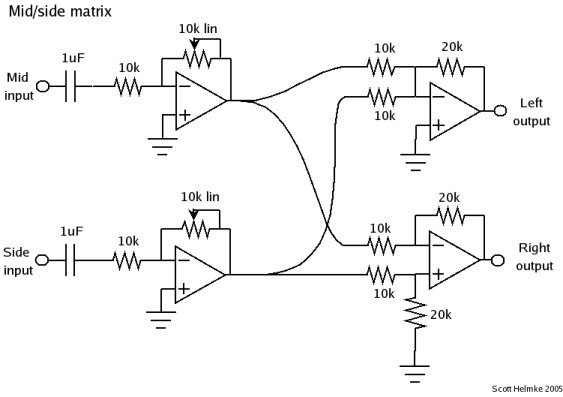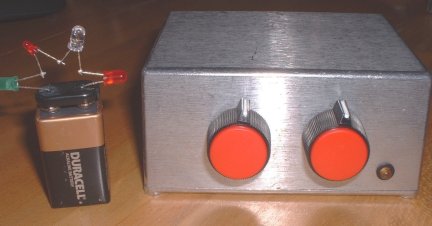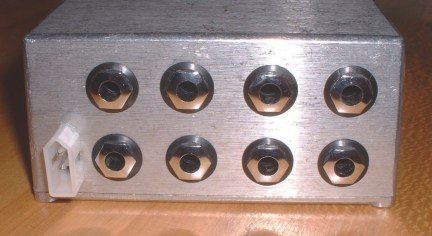Scodiddly
Well-known member
I've got a version of this breadboarded already, and it works. I've since been through the idea with a bit more thought, and this schematic is the result.
What do you think? It's meant to be used as an insert for a pair of mixer channels, or similarly "safe" line-level applications. I figure that I need to buffer the inputs a bit before mixing, though I could probably get away without doing that. The gain of the summing amps is meant to add 6dB (2x voltage) so I can give the volume pots a bit of "gain".
(23-9-2005 schematic has been updated to reflect discussion in this thread)

I'm actually going to have two of these in the box so I can convert left/right inputs to mid/side, screw with the levels, and then back to left/right. Meant for tweaking the width of my XY stereo mics, as well as a generic box for goofing around with M/S techniques. There will be normalled outs/ins between the sections.
What do you think? It's meant to be used as an insert for a pair of mixer channels, or similarly "safe" line-level applications. I figure that I need to buffer the inputs a bit before mixing, though I could probably get away without doing that. The gain of the summing amps is meant to add 6dB (2x voltage) so I can give the volume pots a bit of "gain".
(23-9-2005 schematic has been updated to reflect discussion in this thread)

I'm actually going to have two of these in the box so I can convert left/right inputs to mid/side, screw with the levels, and then back to left/right. Meant for tweaking the width of my XY stereo mics, as well as a generic box for goofing around with M/S techniques. There will be normalled outs/ins between the sections.




